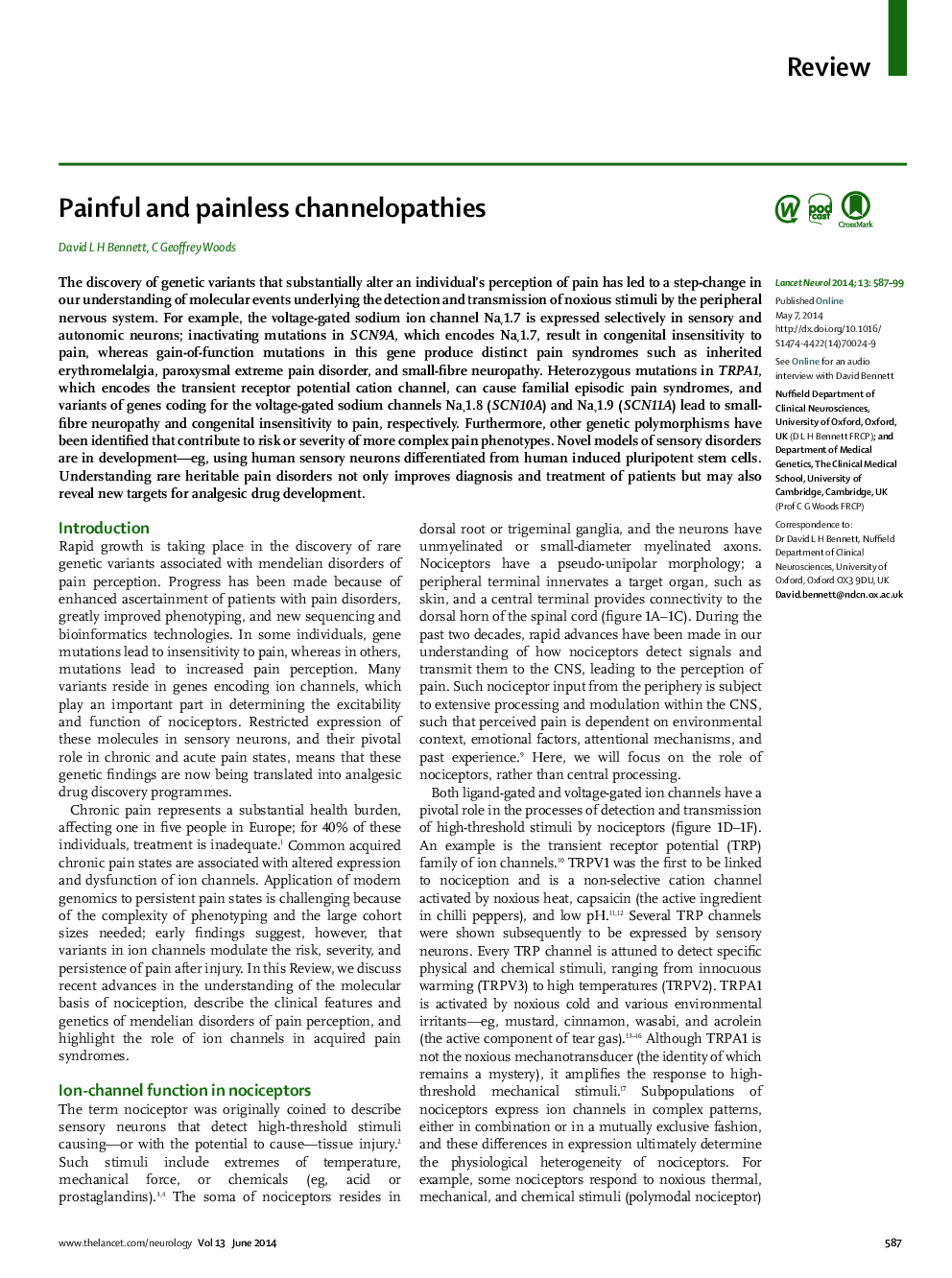| کد مقاله | کد نشریه | سال انتشار | مقاله انگلیسی | نسخه تمام متن |
|---|---|---|---|---|
| 3066602 | 1188088 | 2014 | 13 صفحه PDF | دانلود رایگان |
SummaryThe discovery of genetic variants that substantially alter an individual's perception of pain has led to a step-change in our understanding of molecular events underlying the detection and transmission of noxious stimuli by the peripheral nervous system. For example, the voltage-gated sodium ion channel Nav1.7 is expressed selectively in sensory and autonomic neurons; inactivating mutations in SCN9A, which encodes Nav1.7, result in congenital insensitivity to pain, whereas gain-of-function mutations in this gene produce distinct pain syndromes such as inherited erythromelalgia, paroxysmal extreme pain disorder, and small-fibre neuropathy. Heterozygous mutations in TRPA1, which encodes the transient receptor potential cation channel, can cause familial episodic pain syndromes, and variants of genes coding for the voltage-gated sodium channels Nav1.8 (SCN10A) and Nav1.9 (SCN11A) lead to small-fibre neuropathy and congenital insensitivity to pain, respectively. Furthermore, other genetic polymorphisms have been identified that contribute to risk or severity of more complex pain phenotypes. Novel models of sensory disorders are in development—eg, using human sensory neurons differentiated from human induced pluripotent stem cells. Understanding rare heritable pain disorders not only improves diagnosis and treatment of patients but may also reveal new targets for analgesic drug development.
Journal: - Volume 13, Issue 6, June 2014, Pages 587–599
